Collections Corner is an online initiative aimed at highlighting collections from museums and galleries across India that visitors should know more about. This month, we feature artifacts from one of the three national museums of India, the Salarjung Museum in Hyderabad, Telangana, which opened to the public in December 1951.
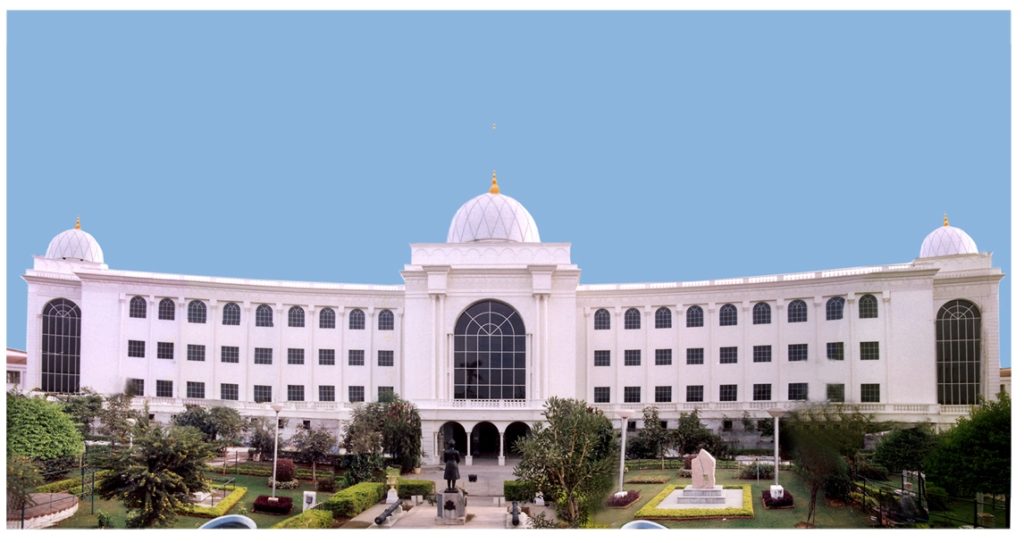
History of the Museum
The Salar Jung Museum of Hyderabad is a repository of the artistic achievements of diverse European, Asian and Far Eastern countries of the world. The major portion of this collection was acquired by Nawab Mir Yousuf Ali Khan popularly known as Salar Jung III. The zeal for acquiring art objects continued as a family tradition for three generations of Salar Jungs. In 1914, Salar Jung III, after having relinquished the post of Prime Minister to H.E.H., the Nizam VII, Nawab Mir Osman Ali Khan, devoted rest of his entire life in collecting and enriching the treasures of art and literature till he lived. The precious and rare art objects collected by him for a period of over forty years, find place in the portals of the Salar Jung Museum, as rare to very rare pieces of art.
After the demise of Salar Jung-III, the vast collection of precious art objects and his Library which were housed in “Dewan-Deodi” the ancestral palace of the Salar Jungs, the desirability of organizing a Museum out of the Nawab’s collection dawned quite soon and Sri M.K. Velodi, the then Chief Civil Administrator of the Hyderabad State approached Dr James Cousins a well known art critic, to organize the various objects of art and curios which were lying scattered in different palaces of Salar Jung III to form a Museum.
With a view to perpetuate the name of Salar Jung as a world renowned art connoisseur, the Salar Jung Museum was brought in to existence and was opened to the public by the then Prime Minister of India, Pandit Jawaharlal Nehru, on December 16, 1951.
Bureau du Roi in the Furniture Gallery
The European collection of the museum has paintings, porcelain, sculpture,glass and furniture. French furniture has distinct styles Louis Quatorze (1643-1715), Louis Quinze (1715-1774), Louis Seize (1775-1793) and the Empire, Napoleanic (1804-1821) period. Among the Louis Quinze collection showcased here is most celebrated and exact replica of Bureau du Roi or the writing table of Louis XV, designed by J.H. Reisener which has multiple shelves, drawers, clocks and elegant cabriole legs. It was embellished with moulded gilt bronze figurines and marquetry panels delineating symbolical figure drawings.
Stolen interview, part of Raja Ravi Varma’s collection
Raja Ravi Varma (1848-1906) introduced new elements into Indian painting. He hailed from a princely family of Kilimanoor near Thiruvananthapuram with connections with the erstwhile state of Travancore, which merged into Kerala after India won its independence. He had acquired mastery in the European manner and technical finish, painting mostly in oil. Many of his paintings depicted epic and mythical subjects.
Kalamkari wall hanging from the Textile Gallery
Kalamkari, literally, “working with pen” is an ancient textile tradition wherein designs are block printed or hand drawn using vegetable dyes. The art has its origins in the environs of the Hindu temple. The technique involves a combination of dyeing and block printing with vegetable dyes applied by means of blocks or a bamboo pen. In the 19th century, the art of sacred cloth painting was practised at a number of places in south India, including Madurai, Salem, Kalahasti, Palakollu, and Machilipatnam.
Some sources say wandering minstrels painted mythological figures on cloth. Though it originated as a religious tapestry, it became a secular craft under Muslim rule. Later, under the British, it became a flourishing item of trade. The Kalamkari showcased is from Kalahasti and depicts a scene from Bhagavad Gita with Lord Krishna and Arjuna, dating to early 20th century.
Tutankhamen’s throne (copy) in the Egypt and Syria Gallery
A major part of the Egyptian art at the museum are copies of the originals from important tombs of early Egyptian kings, but the objects give a glimpse into the art traditions and religious beliefs of ancient Egyptians. This is a copy of the throne of Tutankhamen, the original which is in Cairo Museum, datable to 1340 B.C. The scene on the back support shows the young king seated on a chair and his queen Ankesamun applying perfume on his shoulder.
Embroidery from Japan from the Japanese Gallery
Japanese embroideries form a part of the museum’s collection of Japanese art. They are beautifully done with multi-colour threads in silk. The subjects are from nature and include waterfalls, animals and birds. The object here showcases a waterfall depiction near Nikko, Japan.
Ancestry of the Salar Jungs at the Founders Gallery
The family traces its origins to Shaikh Owais Qarni of Medina and Sir Salar Jung was the 33rd in descent. Shaikh Owais III, the ancestor in the ninth generation, held a high office of Superintendent of Charitable endowments there. He left Medina and sailed for India with his son Shaikh Mohammed Ali and finally settled in Bijapur on the insistence of Ali Adil Shah, Sultan of Bijapur. The genealogy tree presents the ancestry and the images of the Salar Jungs I, II and III are presented in portraiture.
Would your museum like to be part of our monthly Collections Corner initiative? Write to info@rereeti.org.







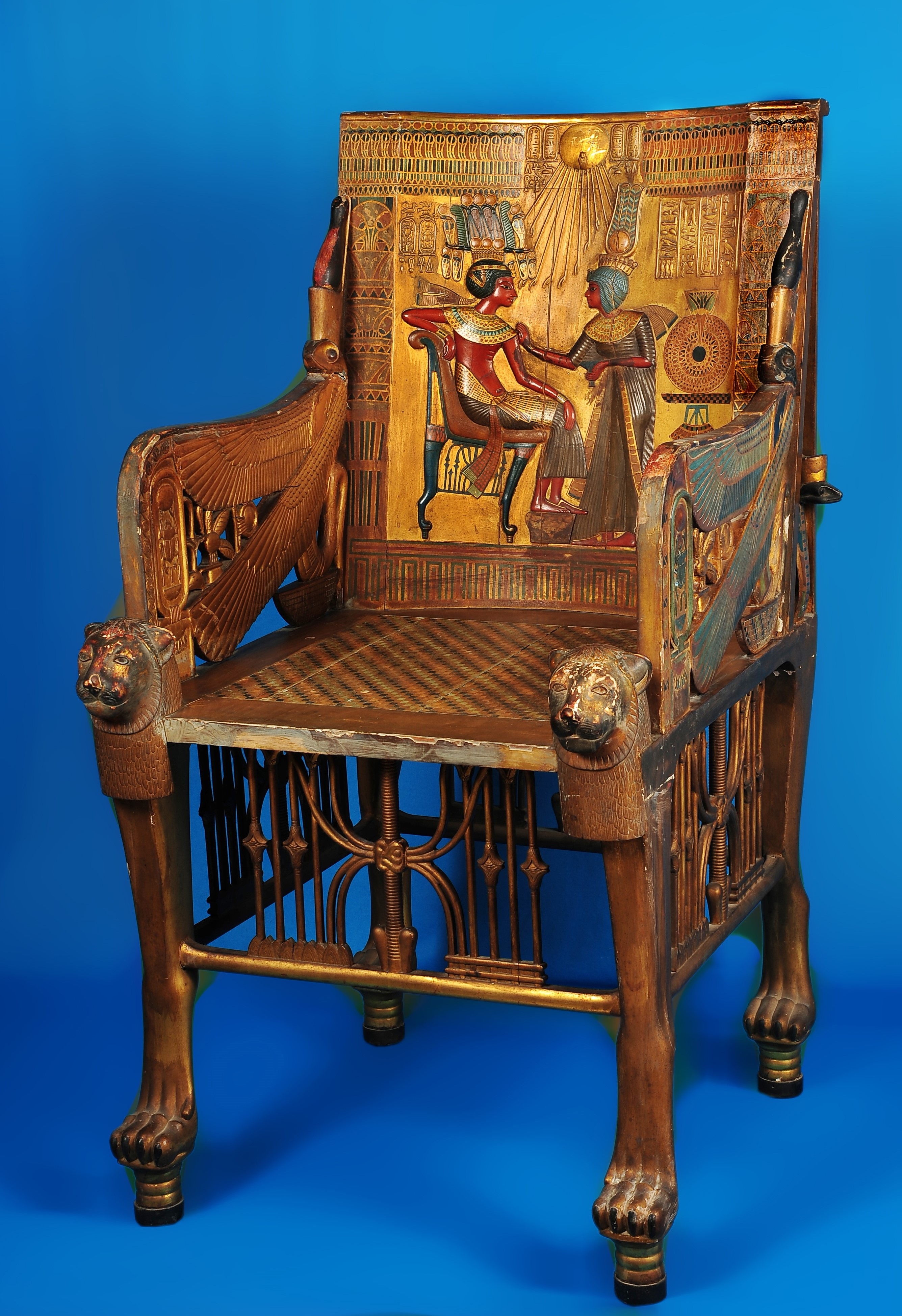
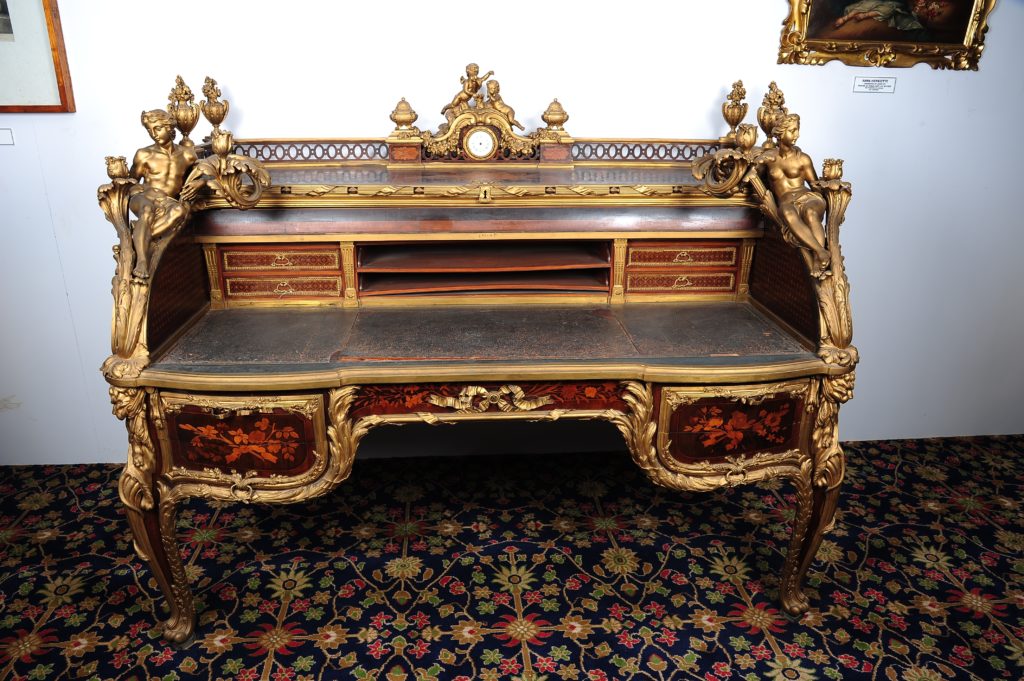
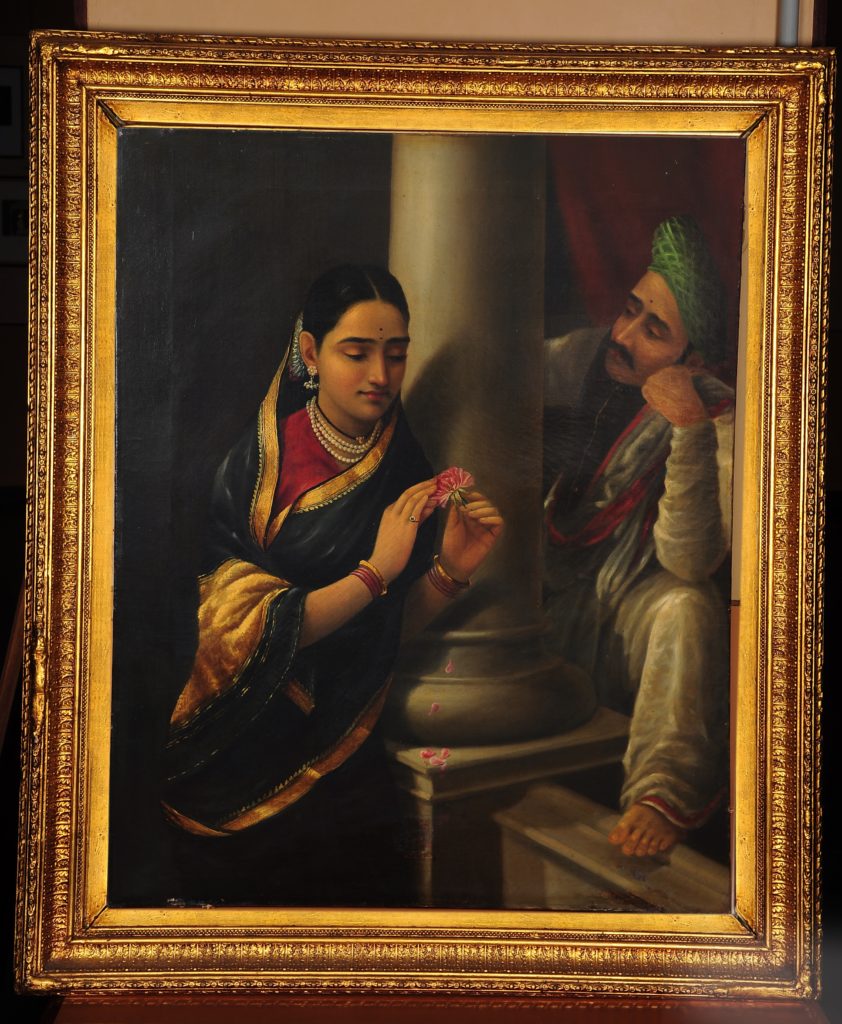
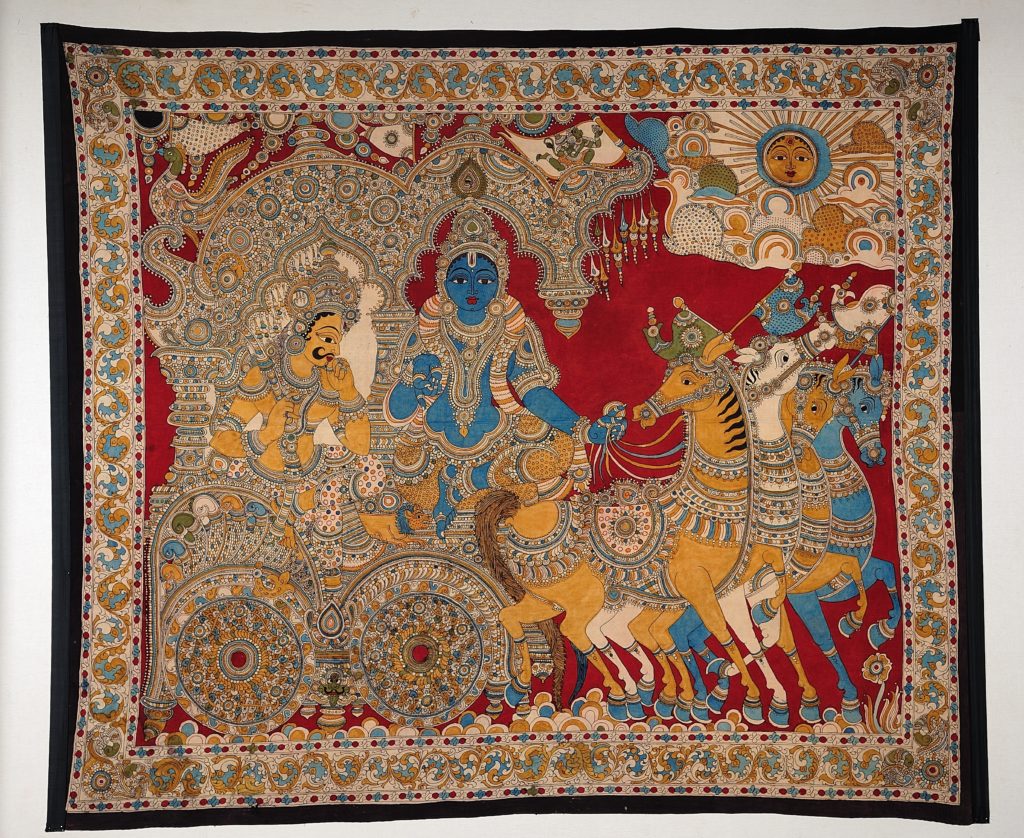
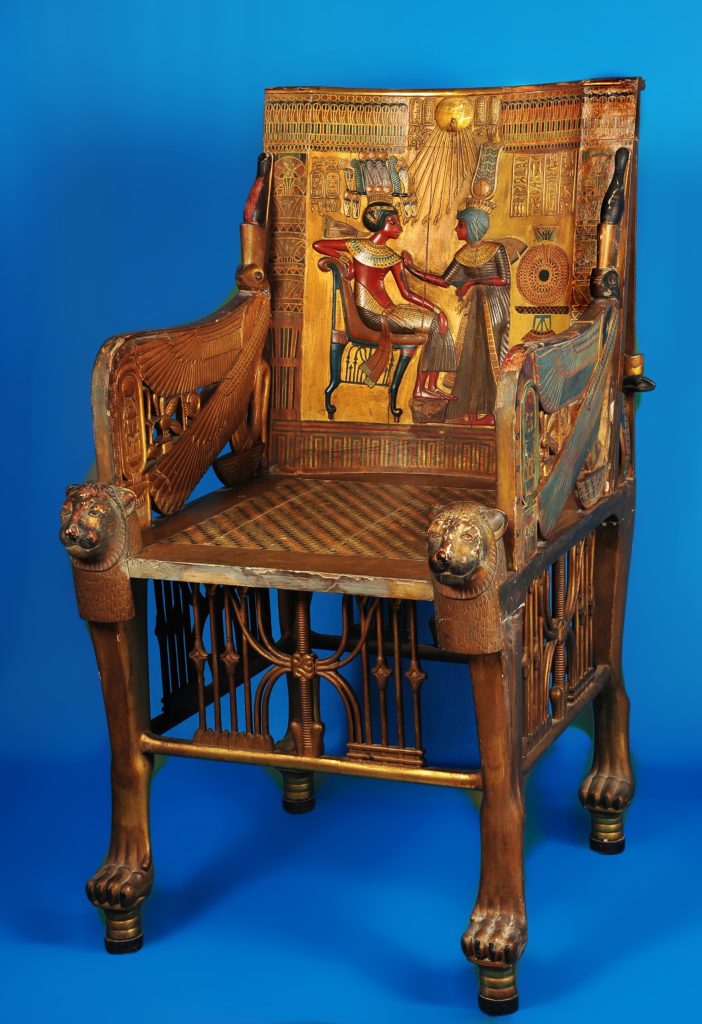
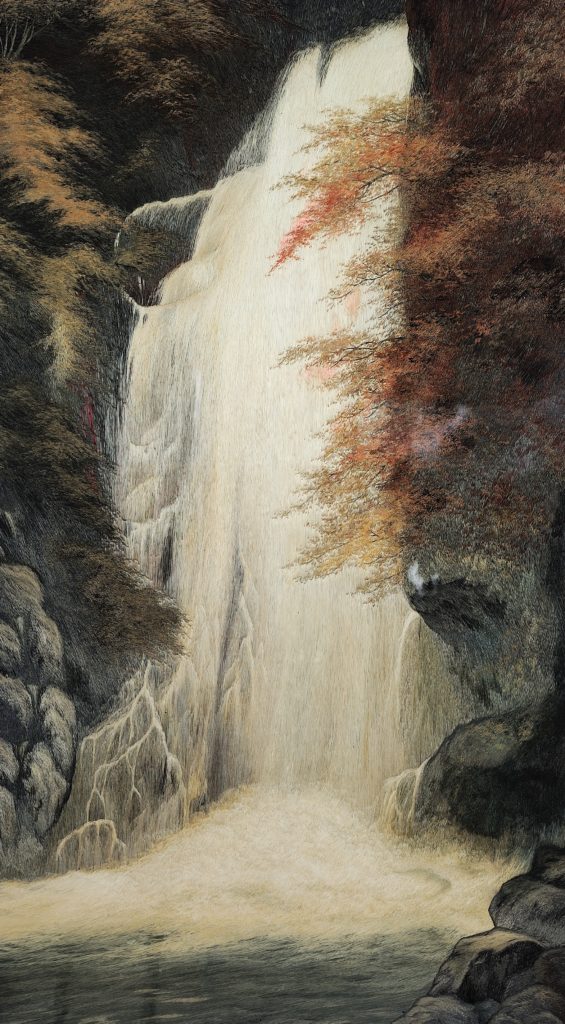
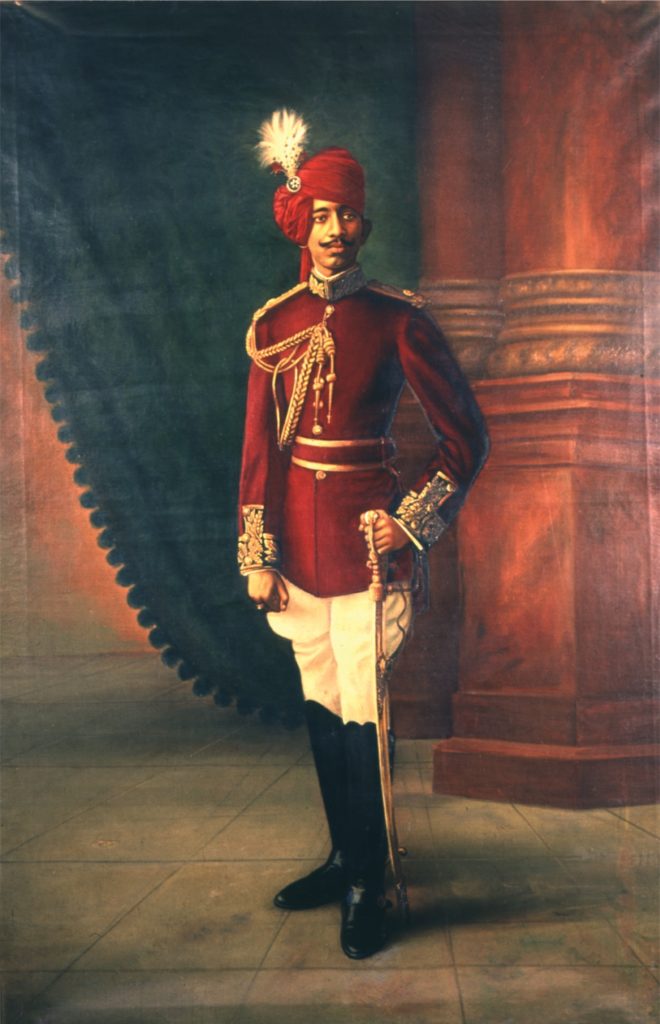
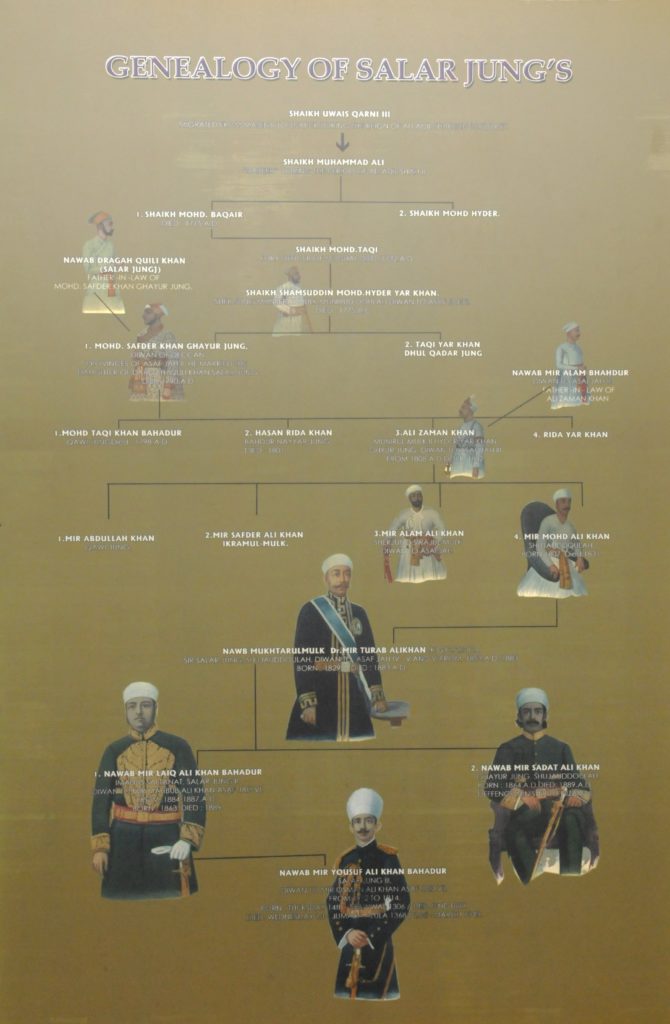
Wonderful! It was such a learning experience reading through the text and seeing the visuals!